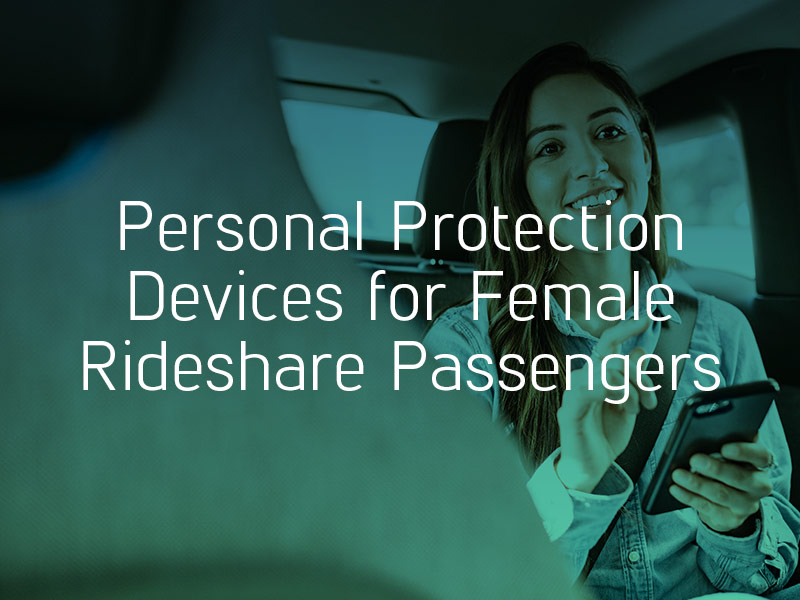Rideshare apps are a popular way to travel, but using these services can carry significant risk. Women report many instances of sexual harassment and sexual assault in Ubers and Lyfts every year, and the companies seem to do little to prevent them. To protect yourself from attack when ridesharing, equip yourself with the following personal protection devices and technology.

#1: Pepper Spray
If you are in a dangerous situation and you are fighting back against an attacker, you need an efficient and handy weapon to fight back with. Pepper spray is often the solution – women have carried this device with them for decades.
Pepper spray is very effective in disabling attackers. One spray directly into the eyes causes severe pain and temporary blindness. As a result, it gives you a window of time to run away and find help. However, pepper spray does come with its disadvantages.
If you are outside and it is windy, the spray can miss the attacker’s eyes completely. Sometimes, it can backfire and spray into your own eyes. Many places, such as college campuses and airplanes, can ban pepper spray entirely.
However, a can of pepper spray is an incredibly effective defensive device overall. Carrying one on your person at all times can greatly aid you in the event of an attack – just be careful where you aim.
#2: Emergency SOS Apps
Nearly everyone has a smartphone in today’s digital age, and if you’re using an Uber or Lyft, you likely have one too. On your phone, you can download a wide range of emergency SOS apps to protect yourself in case of an attack.
These apps use GPS technology to track your location and alert law enforcement when you are in trouble. While each app’s interface is different, most have a button you can press when you feel unsafe. After a period of time, the app will alert an emergency contact and 911 to your location.
If you are in an Uber and the driver is going in a different direction or threatening you, you can use these apps to discreetly call for help. In addition, these apps often let you cancel distress calls in case the situation turns out to be okay.
#3: Wearable Panic Buttons
Manufacturers also create wearable panic buttons and other personal alert devices you can use to alert family, friends, and law enforcement to your location. Depending on the device you receive, you can alert trusted individuals to uncomfortable situations or call for immediate help.
These devices are often small and portable, and you can access them at any time. Cell phones can be easy to detect by a potential attacker, who may take your phone away from you. However, these devices may require a cell phone to operate. With the personal alert device, you remain able to call for help in a more low-profile manner.
#4: Personal Safety Alarms and Whistles
Another effective deterrent to an attack is to carry a personal safety alarm or a whistle. Loud noises can scare a potential attacker off or alert other people in the area. These alarms and whistles can emit very loud sounds – some up to 120 decibels, which is the same volume as an ambulance or a rock concert.
You do not need a cell phone to operate a personal safety alarm, which makes them even more accessible than an app or personal alarm device. However, they do not alert anyone to your location. Personal safety alarms and whistles operate best in situations where there are other people in the area.
Keeping these devices on your person can help you prevent an attack, even if you are riding in an Uber or Lyft. However, assault and violence can still occur even when you are defending yourself. If an Uber or Lyft driver assaults you, seek medical attention and go to the police. Finally, speak to a rideshare attorney for guidance on how to proceed.
